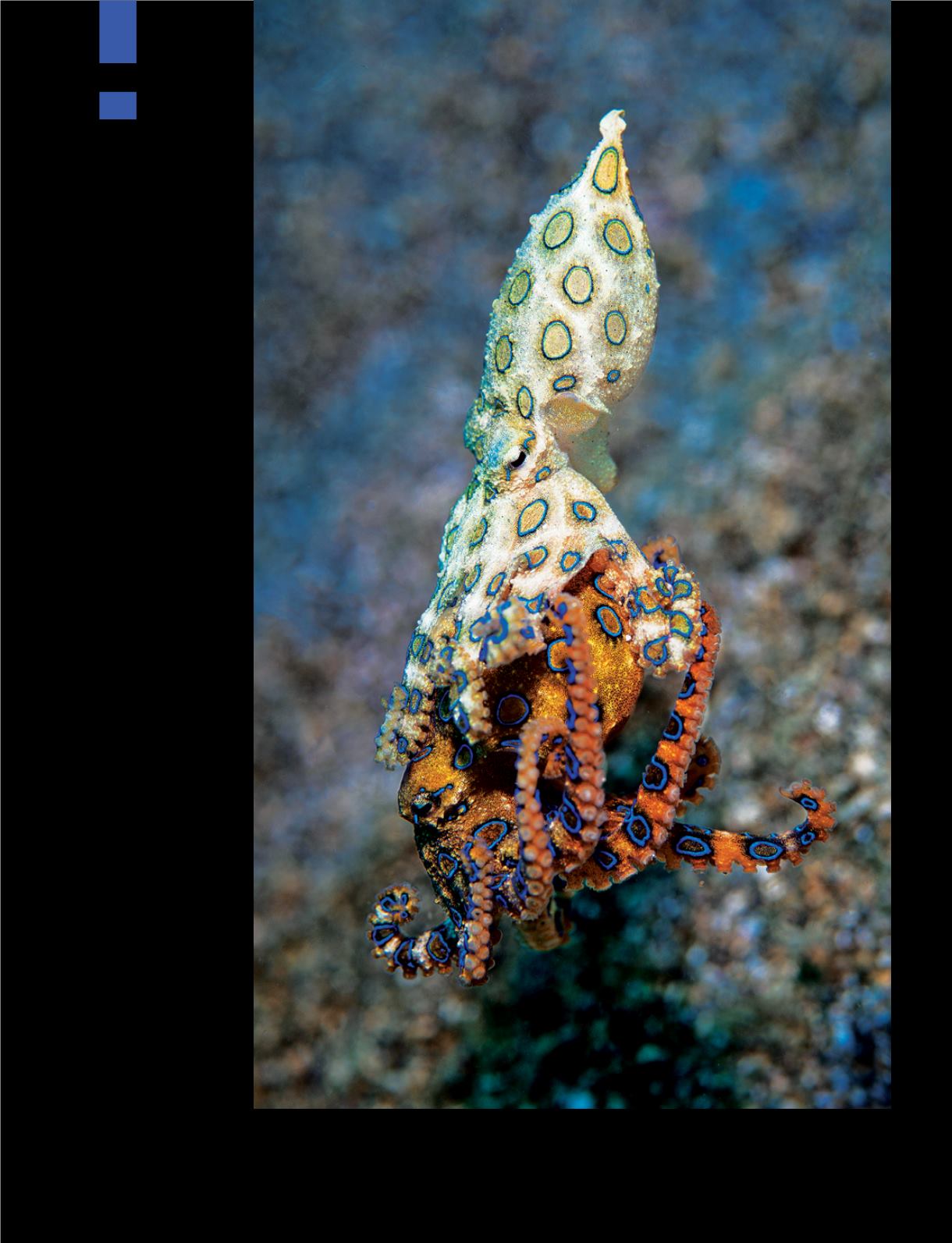
112
|
FALL 2013
BY Imran Ahmad
Blue-ringed octopus
(Hapalochlaena maculosa)
CAmera:
Nikon D3, 60mm f/2.8, Seacam housing, Ikelite DS161 strobe
SEttings:
1/250 sec @ f/10, ISO 200
Location:
Lembeh Strait, Indonesia
T
he blue-ringed octopus
(Hapalochlaena maculosa)
is a difficult subject to
photograph because of its very
small size as well as its cryptic
nature. There is also the issue
of toxicity: An adult blue-ringed
octopus carries enough venom
to kill two dozen people.
I wasn’t even aware of this
pair until I saw the hand signals
from the dive guide, and even
then I wasn’t sure if the aerial
assault unfolding before my
eyes was a territorial dispute or
a mating ritual. I had only three
shots before the two parted
ways.
Subsequent research
confirmed the octopuses were
mating. During reproduction the
male climbs onto the female’s
back and uses a specialized arm
called a hectocotylus to deposit
spermatophores into the female’s
ovipore. The female then lays
between 50 and 100 eggs and
carries them under her tentacles
until they hatch into planktonic
young about 50 days later. The
female is unable to eat while
she guards her eggs; after they
hatch, she dies.
Most divers will never see
a blue-ringed octopus. To have
witnessed these two mating
was very special indeed.
AD
PARTING SHOT


